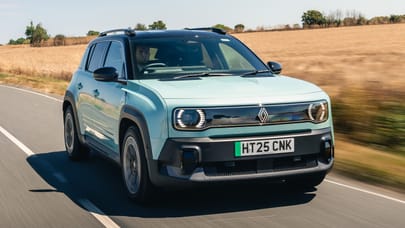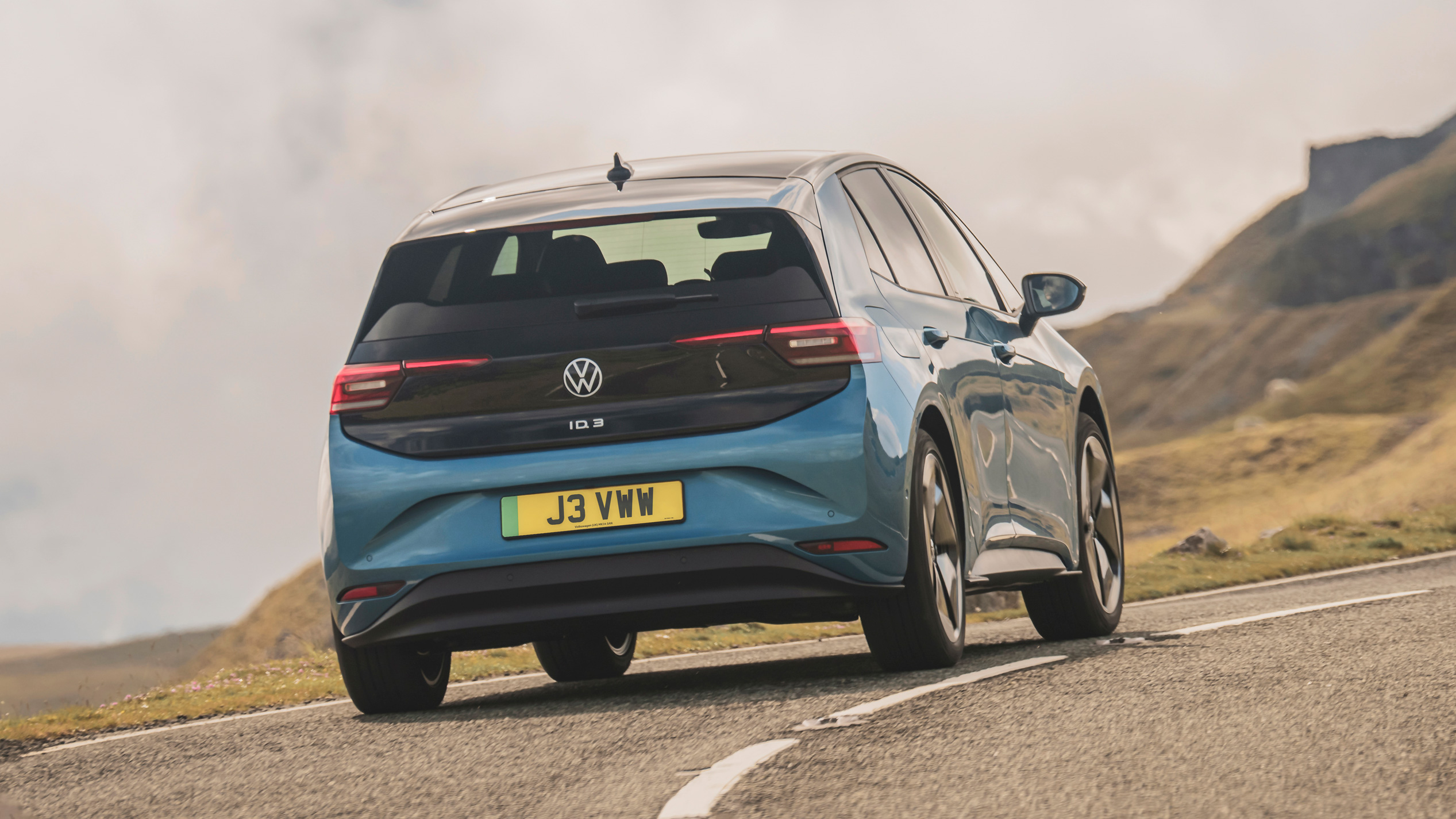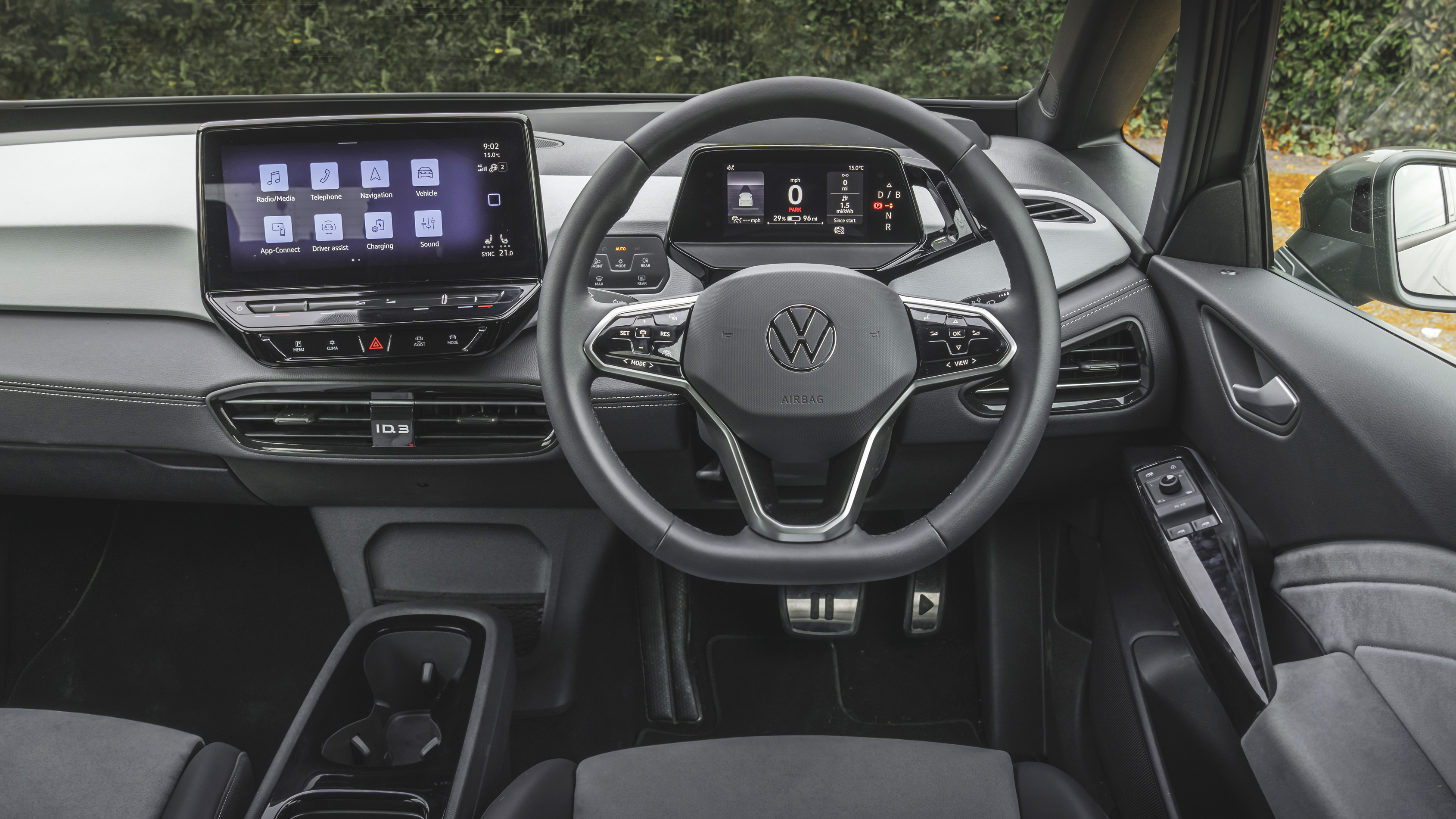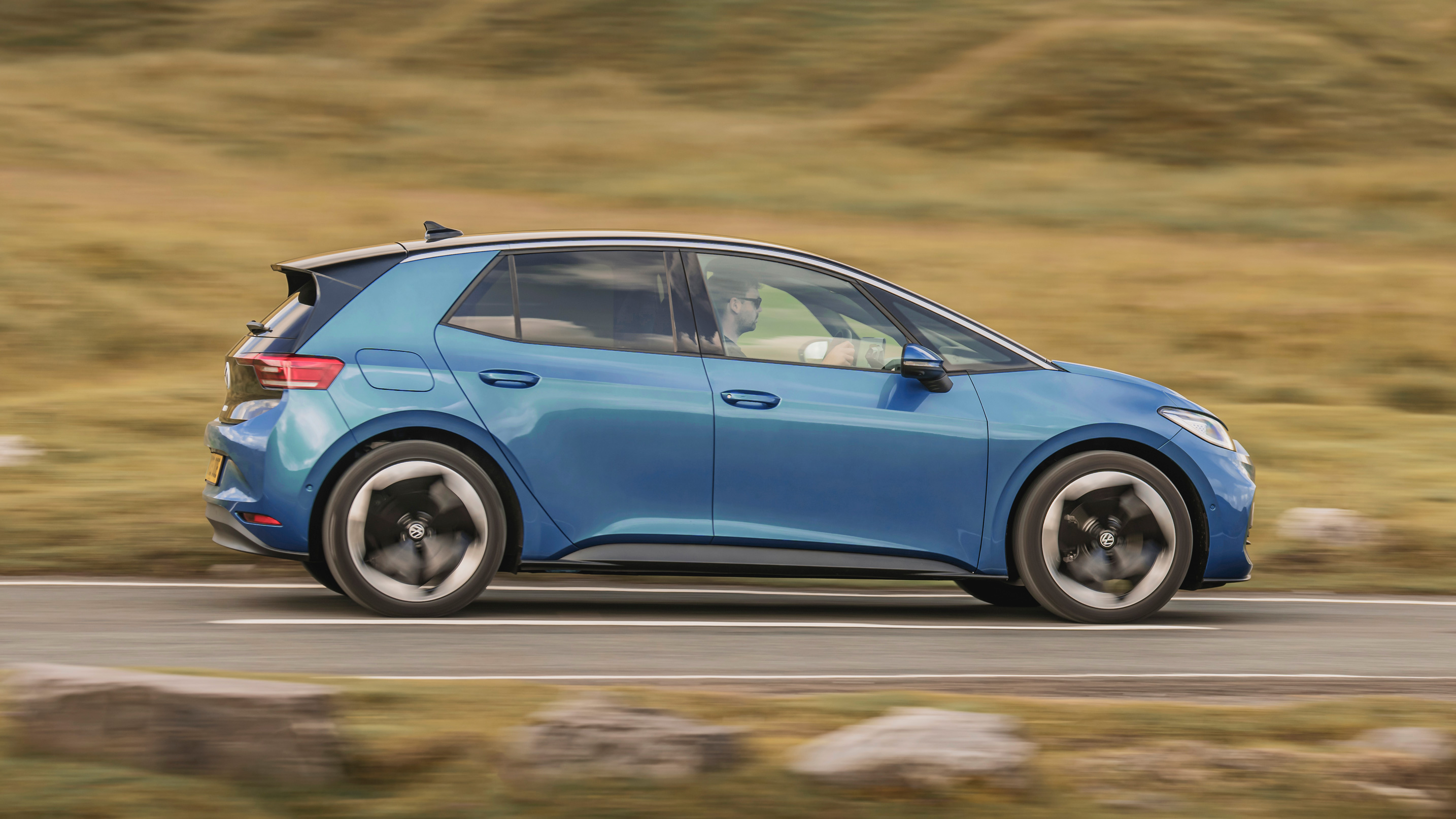
Interior
What is it like on the inside?
The ID.3 designers didn't expect you to play with its electronic settings. And to be fair the majority of drivers don't. Most things – climate, regenerative braking, driver assist, energy consumers – are automatic. You can change those parameters, but to do so you don't get hardware switches. The auto-regen brake system as we mentioned is just one of many such. Most of the time you have to dive deep into menus, or in some cases you'll now be able to access shortcuts by pulling down from the top of the centre screen.
That 12.9in tablet screen on the ID cars is basically the same as in the combustion VWs, and it's far quicker to both load and react to your inputs than when the ID.3 first launched. Unfortunately, you also get VW's goofy volume/temperature sliders beneath the screen. The window switches, mounted on the driver’s door with a touch sensitive button to control the rears, are absurdly hostile too. The steering wheel controls are too easy to activate with an accidental brush. Why wasn't that stuff fixed for the facelift?
The driver's screen is smaller than in those VWs with an engine, which is a further irritation. But software updates have allowed that small screen to carry more info now, so at least you can see battery percentage, navigation arrows and driver assist all at once on that screen. But not music track.
YOU MUST HAVE SOME GOOD NEWS FOR US?
Oh but we do. The driving position is superb and highly adjustable, with wonderfully supportive seats and just-so pedal and steering wheel positions. It's a glassy airy place, and the forward pillars are thin enough not to ruin visibility at roundabouts. You sit slightly elevated above the battery, which helps you place the car.
One surprisingly effective innovation is the ‘ID’ light. What at first appears to be a gimmicky strip of lights wrapped around the cabin is in fact a driver alert system. It’ll subtly gesture its firefly-esque glow in the direction the nav is pointing you, or flash red if you need to brake suddenly.
WHAT ABOUT PASSENGER AND BOOT SPACE?
There’s more rear room than a Golf, if not the Passat-sized accommodation VW claims. To make more foot space behind, the front occupants need to raise their seats a little, but that's EV-normal because of the battery beneath the floor.
Storage in the cabin is super-generous and versatile, with a cannily designed centre console. Pockets behind the front seats don't only hold a road atlas (remember those?) but also has pockets for phones and similar.
You get a 385-litre boot – four litres up on the Golf - and a better stereo now compared to when the ID.3 first launched, even in the base spec car. No charge-cable compartment under the bonnet though, as that’s full of aircon and space for the optional huge head-up display.
Featured

Trending this week
- Car Review
BMW iX3






